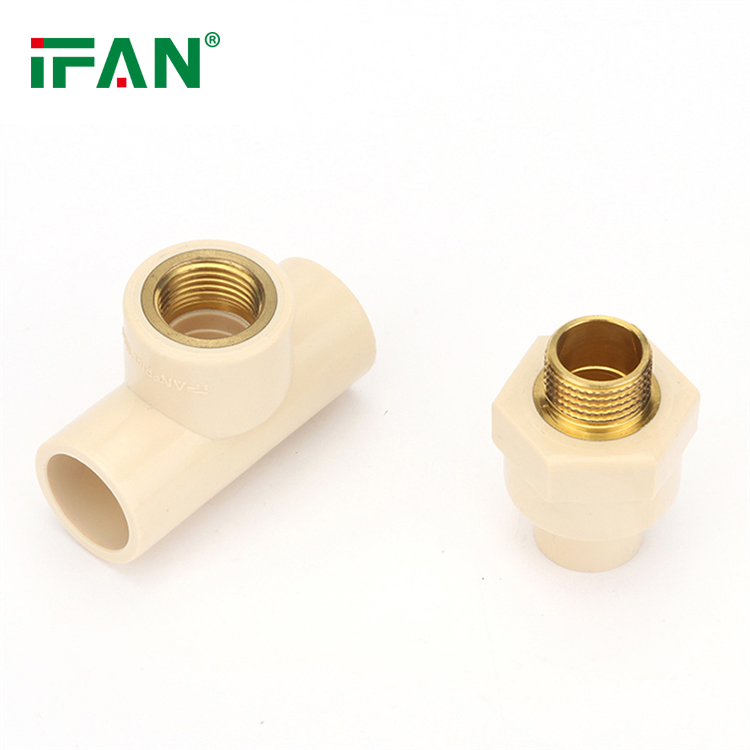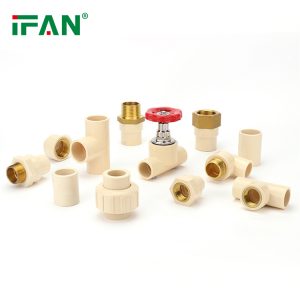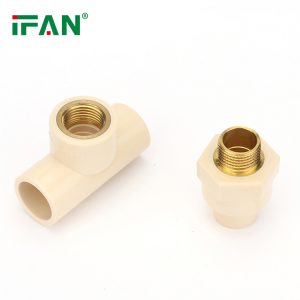Description
IFAN factory 30+ years manufacture experience support color /size customization support free sample.Welcome to consult for catalog and free samples.This is our Facebook Website:www.facebook.com,Click to watch IFAN’s product video.Compared with Tomex products, our IFAN products from quality to price are your best choice, welcome to buy!
Chlorinated Polyvinyl Chloride (CPVC) fittings have gained prominence in various applications due to their durability, resistance to corrosion, and ability to withstand high temperatures. However, the safety and performance of CPVC fittings are governed by a series of standards and regulations that ensure they meet industry requirements. This article delves into the key standards and regulations that affect CPVC fittings, emphasizing their importance in promoting safety and reliability.
1. Overview of CPVC Material Standards
The foundation of CPVC fitting regulations lies in material standards established by organizations such as the American Society for Testing and Materials (ASTM) and the American National Standards Institute (ANSI). ASTM D2846 is one of the primary standards that specifies the requirements for CPVC piping systems intended for hot and cold water distribution. This standard outlines criteria for physical properties, dimensions, and performance characteristics, ensuring that manufacturers produce fittings that meet minimum quality requirements. Compliance with these standards is essential for manufacturers seeking to market CPVC products in both residential and commercial plumbing applications.
2. Regulatory Bodies and Their Roles
Several regulatory bodies play critical roles in overseeing the compliance of CPVC fittings. The National Sanitation Foundation (NSF) and the International Association of Plumbing and Mechanical Officials (IAPMO) are two prominent organizations that certify plumbing products, including CPVC fittings. NSF/ANSI Standard 61, for example, pertains to the health effects of drinking water system components, ensuring that CPVC materials do not leach harmful substances into potable water. IAPMO provides certifications for products based on their adherence to relevant codes and standards, enhancing consumer trust in CPVC fittings used in plumbing systems.

3. Building Codes and Local Regulations
In addition to national standards, local building codes significantly influence the installation and use of CPVC fittings. These codes vary by jurisdiction and may incorporate guidelines from the International Plumbing Code (IPC) or local amendments. Building officials require compliance with these codes to ensure safe and efficient plumbing installations. For instance, some regions may specify particular applications for CPVC, such as restrictions on using CPVC for certain high-pressure systems. Understanding these local regulations is crucial for contractors and builders to avoid violations and ensure that installations pass inspections.
4. Environmental Considerations and Sustainability Standards
As sustainability becomes increasingly important in modern construction, environmental standards for CPVC fittings are also gaining attention. Organizations such as the U.S. Green Building Council (USGBC) promote sustainable practices through the Leadership in Energy and Environmental Design (LEED) certification. While CPVC itself is not inherently sustainable, efforts are being made to improve its lifecycle impact. Manufacturers are exploring eco-friendly production processes and developing recycling programs to minimize waste. Compliance with environmental standards not only enhances a product’s marketability but also aligns with the growing demand for sustainable building materials.

5. Future Trends and Evolving Standards
The landscape of standards and regulations for CPVC fittings continues to evolve in response to technological advancements and changing industry needs. With ongoing research into new materials and applications, future standards may address emerging challenges, such as increased resistance to chemicals and improvements in thermal efficiency. Additionally, as public awareness about environmental issues rises, there may be more stringent regulations regarding the environmental impact of CPVC manufacturing and disposal. Staying informed about these trends will be essential for manufacturers and contractors to remain compliant and competitive in the marketplace.
Conclusion
The standards and regulations governing CPVC fittings are integral to ensuring their safety, reliability, and sustainability in plumbing applications. From material specifications set by ASTM to certifications from organizations like NSF and IAPMO, a robust framework exists to guide manufacturers and users alike. As building codes and environmental considerations continue to evolve, staying abreast of these regulations will be crucial for all stakeholders involved in the CPVC industry. Ultimately, adherence to these standards not only protects public health but also supports the long-term viability of CPVC as a preferred material in plumbing systems.
Related products
-
CPVC ASTM2846
PVC fittings: The versatile choice for DIY projects
-
CPVC ASTM2846
Elevating Piping Solutions: CPVC Fitting Elbow











